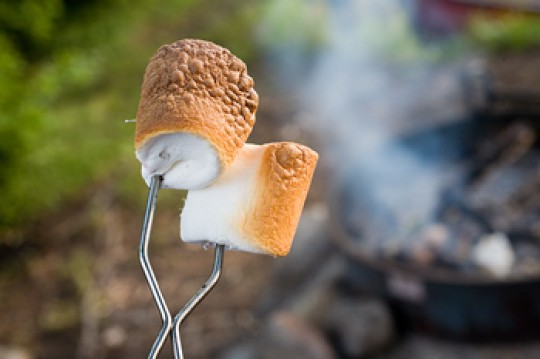July 4: Beware Burns and Injuries from Fireworks, Campfires, Grills
July 4: Beware Burns and Injuries from Fireworks, Campfires, Grills
It’s a daunting statistic: More than half of the 11,000 injuries annual injuries associated with fireworks and grill fires occur within the first week of July, according to the National Fire Data Center.
The encouraging news: Most of these accidents could have been avoided entirely just by following a few simple safety tips. So, to ensure that your holiday holds no unwelcome surprises, we’re breaking from our typical video interview format to offer some good advice below, courtesy of our friends here at URMC’s Kessler Burn & Trauma Center. (For even more safety tips from the Center, click here.)
From Shish Kabobs to Hot Dogs: A Recipe for Safe Grilling
- Check grills for leaks prior to cooking. Before using a gas grill – especially for the first time of the season – check all connections from the fuel source for leaks. A simple technique: After turning the valve on, spray soapy water on the connections and watch for any bubbles, which indicate a leak. If there is a leak, shut the valve off and tighten the connections (alternately, have a professional check the grill).
- Take care when starting charcoal grills. Make sure coals are cool – not warm or hot – when revving up the grill. Use charcoal starter fuel (never gasoline!) to soak coals, and then allow a minute or two for fluid vapors to dissipate before lighting.
Marshmallow time! Gathering Round the Fire
- Select a smart spot for a fire. Build the campfire downwind and far away from your tent (or any other structure). When possible, use a designated fire pit. Once a spot has been selected, clear ground within a 3-foot radius of the fire free of leaves, dry grass and pine needles.
- Alcohol and campfires don’t mix. Most campfire burns are associated with alcohol use, so it is best to avoid drinking beside a burning fire.
- Keep a lookout. Never, under any circumstance, leave a campfire unattended. Never leave children alone to watch the fire.
- Leave a safe site for the next folks. Before leaving the campsite, ensure that the fire is put out. Douse the place of the fire with water, then stir to make sure it says out.
Beware of So-called “Harmless” Fireworks
According to the National Center for Injury Prevention and Control, almost 45 percent of persons injured from fireworks every year are kids 14 years and younger.
What’s more, seemingly safe fireworks – such as sparklers (when lit, they can reach dangerously hot temperature levels around 1800 °F!), firecrackers and bottle rockets – are responsible for more than two-thirds of all fireworks-related injuries. Need another reason to steer clear of them? Fireworks are illegal in a number of states, including New York.
Know Basic Burn Care
Even with the best safety measures in place, accidents sometimes still happen. If you or a loved one suffers a burn, be sure to follow these four “C’s”:
- Cool the wound. Pour cool water directly over the wound as often as you can. Do not use ice or ice water, since this might make the burn deeper.
- Clean the wound. Wash the area gently with mild soap and water to remove any dirt or debris.
- Cover the wound. Use any clean covering, such as a towel or gauze, to protect the wound from future contamination.
- Call for help. If you’re unsure if the burn requires medical attention, you probably do need to see a doctor. Remember, burns can look deceptively minor immediately after the injury, and waiting will only prolong the pain and treatment time. Another rule of thumb: If the burn area is larger than the palm of your hand, or if hasn’t improved within 24 hours (i.e., if it still looks red, blistering, peeling skin), call your physician.
On that note, have a safe and happy Independence Day!
###
* The above story is adapted from materials provided by University of Rochester Medical Center
![]() ______________________________________________________________________
______________________________________________________________________




















